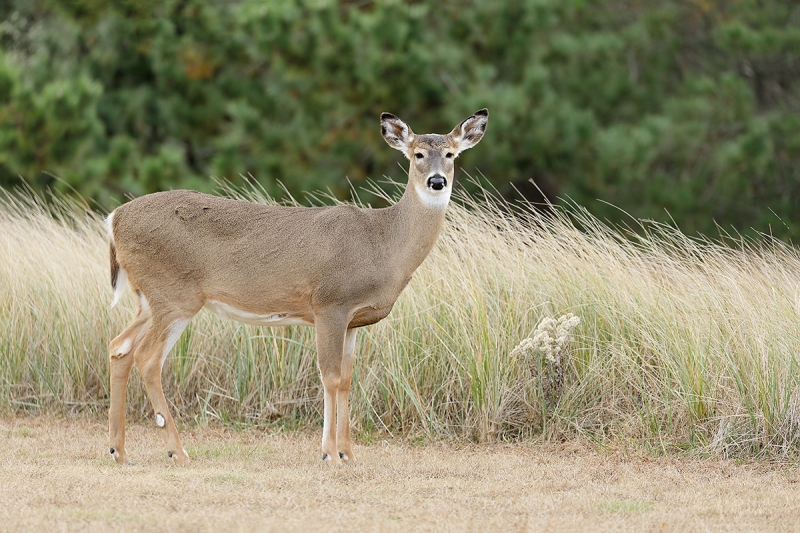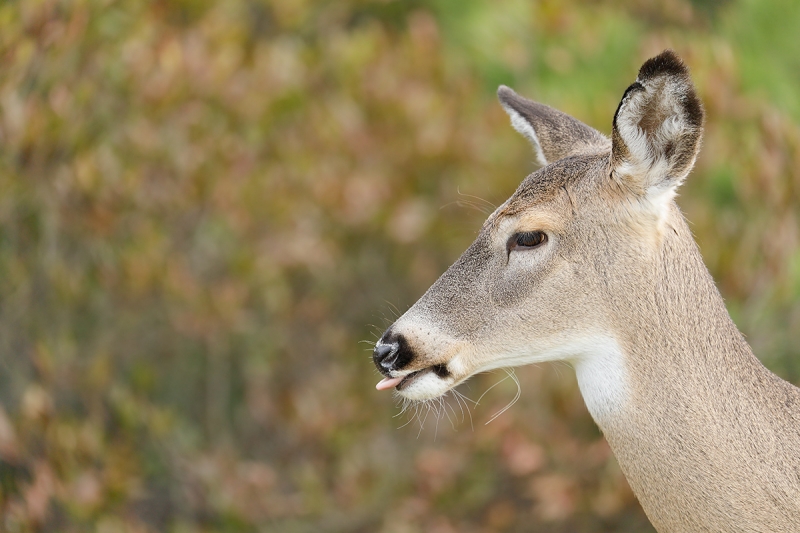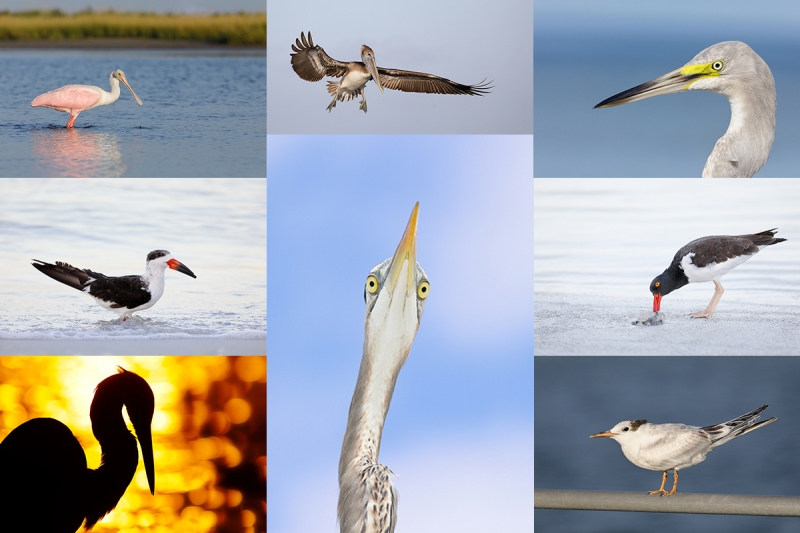Stuff
Billy Joel was as good as ever at Madison Square Garden on Saturday night. And we sat on the floor so our seats were much better than at last month’s concert. I headed back to younger daughter Alissa’s home on the LIRR on Sunday morning. Jen and Maya arrived on Saturday and Sam is joining us soon from Boston where he is studying film-making at Emerson College. It will be the first time that I am spending Thanksgiving with my family in well more than two decades.
As I do not fly home until the Saturday afternoon after turkey day I hope to get out to do some more photography in the coming week. Do consider joining me on the Early Winter DeSoto IPT. Details below.
The Streak
Today makes one hundred fifteen days in a row with a new educational blog post! This one took less than an hour to prepare. With all of my upcoming free time (or not …), the plan right now is to break the current record streak of 480 … Good health and good internet connections willing.
Booking.Com
Booking.Com came through for me twice again recently with both the DeSoto Fall IPT and next July’s UK Puffins, Gannets, and Bempton Pre-trip room reservations. And all the rates were great. If you’d like to give Booking.Com a shot, click here and you will earn a $25 reward. Thanks to the many who have already tried and used this great service.


Gear Questions and Advice
Too many folks attending BAA IPTs and dozens of folks whom I see in the field, and on BPN, are–out of ignorance–using the wrong gear especially when it comes to tripods and more especially, tripod heads… Please know that I am always glad to answer your gear questions via e-mail. Those might include system, camera body, accessory, and lens choices and decisions.
|
|
|
This image was created at Robert Moses State Park in Suffolk County, Long Island, NY with the hand held Canon EF 100-400mm f/4.5-5.6L IS II USM lens (at 286mm) and my favorite deer photography camera body, the Canon EOS 5D Mark IV. ISO 1000. Evaluative metering +2/3 stop as framed: 1/250 sec. at f/5.0 in Tv mode. Cloudy WB in cloudy conditions. LensAlign/FocusTune micro-adjustment: extrapolated to -3. Two AF points up from the center AF point/AI Servo/Shutter Button AF was active at the moment of exposure. The selected AF point was on the right side of the deer’s neck right below the right eye (as originally framed; this is a slight crop to 3X2 from the the top, from our right, and from the bottom.) White-tailed Deer doeBe sure to enjoy an enlarged version by clicking on the image. |
Intermediate Telephoto Lens Versatility and Advice
Intermediate Telephoto Lens Versatility
As you have been seeing here for about two years most every week, the versatility of the Canon 100-400 II borders on phenomenal. All of the 70-200mm lens, the old Canon 100-400, and the Nikon 80-400 (some of those with a teleconverter) are all excellent. But none match the new 1-4 with its amazing close focus, its four-stop IS, and it sharpness (especially with the 1.4X III TC).
Intermediate Telephoto Lens Advice
I have written this often: “Never drive through a park or preserve or any type of natural area without having at least your intermediate telephoto lens immediately at hand. Not seeing any birds at Moses we neglected to do that. In short order we had several young bucks with fairly nice racks starting at us at point blank range. The next minute there was one on the other side of the road walking slowly with the branches of a fairly large bush draped over him. At that point I followed my own advice …
|
|
|
This image was created at Robert Moses State Park in Suffolk County, Long Island, NY with the hand held Canon EF 100-400mm f/4.5-5.6L IS II USM lens (at 286mm) and my favorite deer photography camera body, the Canon EOS 5D Mark IV. ISO 1000. Evaluative metering +2/3 stop as framed: 1/250 sec. at f/5.6 in Tv mode. Cloudy WB in cloudy conditions. LensAlign/FocusTune micro-adjustment at 400m: -5. Two AF points to the right and one row up from the center AF point/AI Servo/Shutter Button AF was active at the moment of exposure. The selected AF point was on the deer’s forehead slightly above and in front of the eye as framed. White-tailed Deer young with tongue outBe sure to enjoy an enlarged version by clicking on the image. |
When Working From Your Vehicle: Engine Off/Engine On?
When using your vehicle as a blind, you often have to decide whether to turn off the engine or leave it running. Most folks think that it is always best to always turn off the engine but that entails two risks:
1- The subject is often alerted to your presence when you turn off the engine, often to the point of fleeing. Oops.
2- Let’s say you turn off the engine and the subject is OK with that. But, it changes its position and you need to re-position your vehicle; most modern vehicles make a loud, unpleasant, electronic beep or other piercing sound when the key is turned. These sounds will often upset the apple cart instantly; bye-bye birdie (or animal).
Hand Holding Tip When Working From Your Vehicle with the Engine Running
If you are hand holding (usually an intermediate telephoto lens) the trick to photographing from your vehicle (usually at very close range) is to not rest your left forearm on the lowered window or on the door frame. Simply tuck your left elbow into our side, hold the lens well out on the lens barrel, and fire away. I made both of today’s image with the engine on confident that the vibrations would not effect the sharpness of the images made at 1/250 second or faster.
Your Favorite and Why?
Which of today’s featured images do you like best? Be sure to let us know why.
|
|
Recent Fort DeSoto ImagesFrom bottom left clockwise back to center: Great Egret, blasting sunrise highlights; Black Skimmer, winter plumage in pre-dawn light; Roseate Spoonbill foraging; Brown Pelican, juvenile landing; hybrid heron X egret???; American Oystercatcher feeding; Royal Tern, worn juvenile; Great Blue Heron from below. You can see a composite of more recent images in the DeSoto Sucked This Past Weekend blog post here. |
Fort DeSoto Early Winter IPT. 3 1/2 days: $1599
Saturday DEC 2 (afternoon session) through the full day on Tuesday DEC 5, 2017. Meet and Greet Introduction on SAT DEC 2, 2017
With no water in Estero Lagoon, Corkscrew Swamp and Anhinga Trail total busts for many years, and Ding Darling NWR managed into oblivion, Fort DeSoto has emerged as the premier bird photography location in the state. Join me in early winter to escape the cold weather and photograph lots of tame terns, gulls, herons, egrets (including Reddish Egret), shorebirds (including and especially Marbled Godwit), Osprey, and Brown Pelican. Long-billed Curlew, Wood Stork, and Roseate Spoonbill all range somewhere between likely and possible.
Learn to get the right exposure every time, to approach free and wild (and often tame!) birds, and to design a pleasing image. And learn the location of my new Fort DeSoto hotspot along with my favorite sunset location (sky conditions permitting). To register call Jim or Jen at the office at 863-692-0906 or shoot me an e-mail.
DeSoto IPT Details
This IPT will include four 3 hour afternoon sessions, three 3 1/2 hour morning sessions, three lunches, and after-lunch image review and Photoshop sessions. To ensure early starts, breakfasts will be your responsibility. Dinners are on your own so that we can get some sleep.
Because of the narrow time frame, your $499 non-refundable deposit can be paid not by credit card. Call Jim or Jennifer at the office with a credit card at 863-692-0906 to register. Your balance must be paid by check once you sign up. The balance check (made out to “BIRDS AS ART) should me mailed to us at BIRDS AS ART, PO Box 7245, Indian Lake Estates, FL, 33855. Please print, complete, and sign the form that is linked to here and shoot it to us along with your balance check. If you have any questions, please feel free to contact me via e-mail.
Canon lens rentals are available on a limited basis: 600 II, 500 II, 400 DO II, and 200-400 f/4 with Internal TC.
If In Doubt …
If in doubt about using the BAA B&H affiliate link correctly, you can always start your search by clicking here. Please note that the tracking is invisible. Web orders only. Please, however, remember to shoot me your receipt via e-mail.




Please Remember to use my Affiliate Links and to Visit the New BAA Online Store 🙂
To show your appreciation for my continuing efforts here, we ask, as always, that you get in the habit of using my B&H affiliate links on the right side of the blog for all of your photo and electronics purchases. Please check the availability of all photographic accessories in the New BIRDS AS ART Online Store, especially the Mongoose M3.6 tripod head, Wimberley lens plates, Delkin flash cards and accessories, and LensCoat stuff.
As always, we sell only what I have used, have tested, and can depend on. We will not sell you junk. We know what you need to make creating great images easy and fun. And please remember that I am always glad to answer your gear questions via e-mail.
I would of course appreciate your using our B&H affiliate links for all of your major gear, video, and electronic purchases. For the photographic stuff mentioned in the paragraph above, and for everything else in the new store, we, meaning BAA, would of course greatly appreciate your business. Here is a huge thank you to the many who have been using our links on a regular basis and those who will be visiting the New BIRDS AS ART Online Store as well.
Amazon.com
Those who prefer to support BAA by shopping with Amazon may use the logo link above.
Amazon Canada
Many kind folks from north of the border, eh, have e-mailed stating that they would love to help us out by using one of our affiliate links but that living in Canada and doing so presents numerous problems. Now, they can help us out by using our Amazon Canada affiliate link by starting their searches by clicking here.
Be sure to like and follow BAA on Facebook by clicking on the logo link upper right. Tanks a stack.
Typos
In all blog posts and Bulletins, feel free to e-mail or to leave a comment regarding any typos or errors. Just be right :).

















Hi Artie,
I didn’t answer your question concerning the images, so here are some thoughts.
Thanks.
I prefer the level of detail of the second image, but I struggle with tight crops of animals. For me, it’s not obvious where to crop an animal and still create a balanced image. Its much easier when photographing people.
I pretty much disagree. Only on rare occasion do I have any doubt about where to crop tight images of birds or of wildlife. Though I do not do a lot of people, I would likely have more problem with tight crops there. Do see the section on advanced composition and image design in ABP II and in addition, study the zillions of tightly cropped images here on the blog 🙂
For tight crops, I’ve been ignoring the horizon and levelling the image based on a prominent feature of a subject such a a bird’s bill. It might be unconventional, bit I feel it gives me a more balanced and impactful image. Just something to think about.
I am a bit confused. Do you feel that image #2 needs to be leveled? Also, I often level images based on the bird or animal’s eyes (if both are visible) as they pretty much keep them level most of the time.
with love, artie
Hey Arthur, Image # 1 for me love the direct stare and the composition. The tall grass adds a nice touch.
Thanks John.
a
Hi Artie, I prefer image #2. I like the simplicity of image #2 and the added interest of the tongue, the colours of the background work well with the colours of the deer. I am not so keen on image #1 because the deer is in an area of cut grass, with the longer grass just behind it suggesting that the deer is in a human environment (not necessarily a bad thing but I think that this detracts from this image. Also the transition between the cut grass and the mown grass is a bit distracting.
Jake
Thank you. What I like about Image #1 is the bouquet of spent goldenrod blossoms.
a
Artie: I’m intrigued by this answer of yours. If the goldenrod bouquet weren’t, there would it significantly reduce your opinion of this image?
Artie: I much prefer image 2, the head portrait. Will a beanbag damp out the engine vibrations?
Bean bags can help if they are not too tightly filled.
with love, artie
ps: I wish that I had my BLUBB with me last night when photographing from the car after sunset …
I use this combination exclusively. Hand held with a strap, I can walk for hours without fatigue. For several months, I used the lens without the 1.4 extender and found it did not have sufficient reach. This being said, it gave me the opportunity to learn to use the lens in a variety of situations before adding the extender.
In some situations the lens alone is just fine but having the 1.4X III along for when you need extra reach makes the set-up even better.
With the 1.4 extender, I have the reach for many situations although I need to be smart and patient when I engage subjects. Sometimes, it takes me hours to achieve the results others can achieve with more powerful lenses, but I feel there is value in taking the time to understand and engage my subjects gradually. I also witness events and changes in light that others miss who rush in and rush out thinking they have the shot.
Not having lots of reach at hand can go both ways. I love having both options; that said, there are always lots of benefits that come from spending lots of time with your subjects regardless of focal length.
Yesterday, I was shooting during and after our first snowfall of the season. The combination allowed me to zoom out and capture some quality landscapes.
As always.
My only complaint is the low light performance. With winter approaching, there are significantly fewer hours of daylight and the sun is lower in the sky. Although the sun’s angle is beneficial, the light is more diffuse and less intense. This means I am dropping the shutter speed or working with a relatively high ISO to compensate.
That is why God invented tripods and Mongoose heads 🙂
I have experienced some situations where the combination has had trouble locking on subjects in complex, low-light environments such as birds in shrubs, but generally the system focuses well.
#1: AF needs contrast to see so it may always struggle in low light/low contrast situations.
#2: When the system struggles with lots of small branches in the way it is just trying to do its job 🙂
Happy to share a few images, just let me know.
Do you have any online?
with love, artie